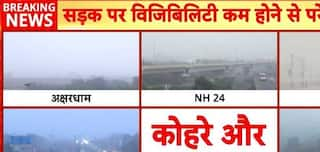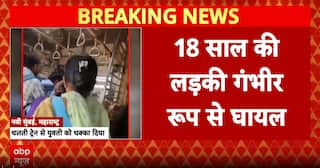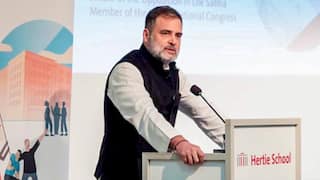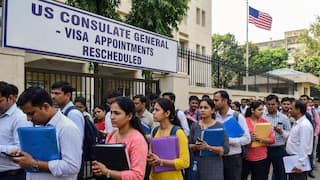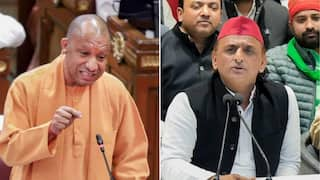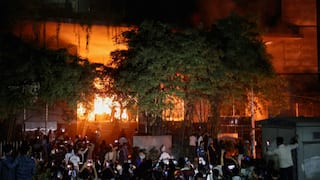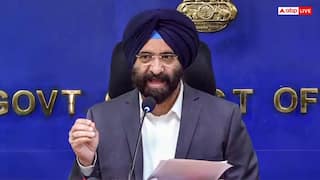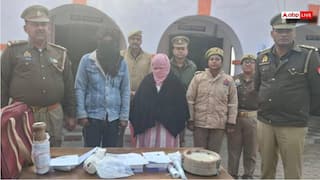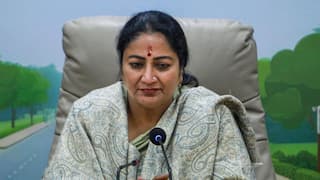Explorer
The Lost Childhoods Of Migrant Workers in India
This article is an attempt to draw the attention of policy makers, central and state governments, academicians and researchers to the various vulnerabilities of children of migrant workers which solely arise out of the migration of their parents.

(Representative Image/ Getty)
Despite the fact that 14.2 crore people (12% of country’s total population) in India are migrants (Census, 2011), their existence had not been taken cognizance of by Indian the state as well as the society until now. The recent COVID 19 crisis has suddenly brought the spotlight on the plight of migrant workers, and awakened the society of their problems and sufferings. This article is an attempt to draw the attention of policy makers, central and state governments, academicians and researchers to the various vulnerabilities of children of migrant workers which solely arise out of the migration of their parents.
This article discusses a vulnerability framework, developed by Kailash Satyarthi Children’s Foundation on the basis of a study which was conducted on migrant workers in 2019, to better understand the adverse impact of distress migration on children of the migrant families, especially in the context of denial to these children rights to protection, education, food and nutrition, safe drinking water sanitation and health care and their subsequent vulnerability to different forms exploitation throughout their lives.
ALSO READ | The Killing of George Floyd: Racism in a Country Living on Borrowed Time
Several studies have revealed that the migration tends to be higher in rural areas and among the chronically poor who are at the lowest level of income pyramid (Deshingkar, 2010; Sangita 2017). Poverty in rural areas in turn is linked to factors such as marginal or no land ownership, crop failure, proneness to drought/floods, illiteracy, absence of irrigation facilities, lack of local employment opportunities. Poverty induced migration, often forces individuals to migrate to other areas for survival, with or without their children. This affects their children in multiple ways, depriving them not only of quality education, protection, healthy and hygienic living conditions and adequate healthcare but also of parental care and affection in some cases, which ultimately leads them into the low-skill–low-wage trap that their parents are currently in.
The various vulnerabilities of children of migrant workers are discussed below.
i) Lack of Access to Education: Despite the enactment of Right to Free and Compulsory Education (RTE) Act, 2009 which guarantees access to education and ensures free and compulsory education to all children up to the age of 14 years, a very large section of children of migrant workers does not have access to quality education, especially those migrant children who live with their parents in the destination cities. This is so because of constant relocation of parents for work, non-availability of schools closeby, and non-availability of residential schools in native/source areas because of which migrant parents are forced to take their children along while they migrate to another place for work.
ii) Drop Out and Irregularity: Although the problem of dropping out amongst children has lessened over the years generally as enrollment rate has considerably increased (ASER, 2018) however, children of migrant parents are an exception, they are still are at a very high risk of dropping out of school due to their constant mobility with their parents. Even the children who are left behind in the native villages with other relatives, become prone to being irregular in attending school because of lack of motivation and absence of parent’s supervision. Once the children drop out or stop going to school, the likelihood of such children going astray is very high.
ALSO READ | ‘Be Still And Do Not Move’: The Covid-19 Migrant And The Ministry Of The Soul
iii) Child Labour: Children who migrate with their parents, in most cases discontinue schooling, their removal from free and accessible education directly exposes them to child labour. A majority of children of migrant parents mostly work in the same industry segment in which his/her parents work. The child labour rescue, as per NCRB Crime in India reports is, only a meagre 0.02% of the total estimated number of child labourers in the country during 2016-18(KSCF, 2020). Thus it would not be an exaggeration to say that the Indian state has turned a blind eye to the problem of child labour putting the health, growth and development of a large number of children in danger.
iv) Child Trafficking: Likewise, children of migrant parents, who are left behind in native villages, become exposed to trafficking because of absence and non-availability of parental care and supervision, poverty being the root/underlying cause for trafficking of children.
v) Malnutrition and Poor Health: Children who migrate with parents or those who are left behind, both are deprived of maternal care as migrant females almost always work. In addition to this, migrant families live in overcrowded camps, settlements, makeshift shelters, where they lack basic amenities in terms of access to hygienic environment, drinking water and sanitation. Such unhygienic living conditions expose their children to the risk of contracting the various communicable diseases such as diarrhea, cold, cough, and fever. Further, as children of these families in the age group of 0-6 years have no access to Anaganwadis and creches at destination cities, and as the mother’s lack knowledge about immunization, nutrition and hygiene, therefore, these small children are at a very high risk of stunting, anemia or other deficiencies due to malnutrition.
vi) Exposure to Physical, Mental and Sexual Abuse: Children of migrant parents are also at a risk of physical and sexual abuse as most of the times they remain outside of the protective umbrella of the parental care and supervision. Cases of sexual harassment and abuse among adolescent girls are also not uncommon. This kind of parental absence caused by their long engagement in work and/or neglect also sometimes leads to mental instability among these children, causing depression, anxiety and attention deficit disorders.
ALSO READ | Mission Jai Hind And The Role Of The State In An Epidemic
The Indian state till now has been in denial of the existence of the migrant workers and their families. Unfortunately, due to this denial, at least two-three generations of children of migrant workers have lost their childhoods, and have been condemned to the same low-skill-low-wage work in which their parents were engaged in. While all such children and their families have been at a loss as regards their mainstreaming and development, it is high time that the state realises that the country cannot develop in true sense without the upliftment of migrant workers and their children. The present crisis which has brought the issues relating to the migrant workers and their families in sharp focus offers the Indian state an opportunity to make a departure from the past and frame policies and strategies addressing the various issues relating to the migrant workers, especially the education of their children because it is only through education that the children of migrant workers can break/escape the cycle of poverty, illiteracy and exploitation.
It is time that the Central and State Governments take cognizance of the issues relating to the migrant workers especially the education of their children and create physical and human infrastructure and allocate sufficient funds to ensure access to quality education to children of the migrant workers.
Authors: Dr Purujit Prahraj and Abza Bhardwaj, Kailash Satyarthi Children's Foundation
Disclaimer: The opinions, beliefs and views expressed by the various authors and forum participants on this website are personal and do not reflect the opinions, beliefs and views of ABP News Network Pvt Ltd.
Follow Blog News on ABP Live for more latest stories and trending topics. Watch breaking news and top headlines online on ABP News LIVE TV
View More









